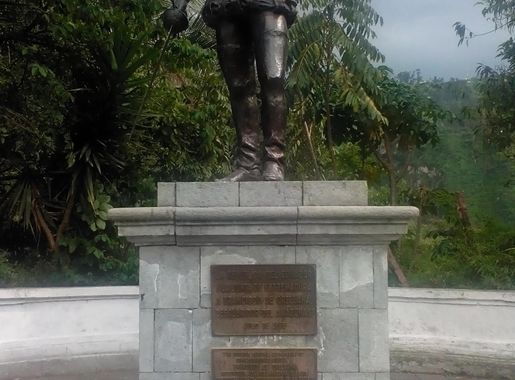
La Floresta: The Bohemian Heart of Quito
Discover La Floresta, Quito's bohemian neighbourhood, where art, culture, and culinary delights come together to create an unforgettable experience.
Welcome to La Floresta, Quito's vibrant and artistic neighbourhood filled with bohemian charm. Nestled just east of the city's bustling centre, La Floresta is a haven for artists, food lovers, and explorers. Stroll through its colourful streets adorned with stunning murals and street art, and you'll feel the creative energy that defines this unique part of the city. La Floresta is home to a diverse array of cafes, galleries, and artisanal shops. Whether you're sipping a freshly brewed coffee at a local café or browsing through handmade crafts at a boutique, you'll find that the spirit of creativity is everywhere. Visit the local markets to sample traditional Ecuadorian dishes or join a cooking class to learn how to make them yourself. The neighbourhood is also known for its vibrant nightlife. From live music venues to trendy bars, La Floresta offers an array of options for an evening out. Enjoy a meal at one of the many gourmet restaurants, where you can taste both local and international cuisine prepared with fresh, local ingredients. For nature lovers, La Floresta provides easy access to several green spaces and parks where you can unwind and enjoy the natural beauty of Quito. Take a leisurely walk through the tree-lined streets or relax in one of the serene parks that dot the area. La Floresta truly offers something for everyone, making it an essential stop on your visit to Quito.
Local tips in La Floresta
- Visit the local markets early in the morning to experience the freshest produce and traditional foods.
- Take a street art tour to fully appreciate the vibrant murals and learn about the artists behind them.
- Wear comfortable shoes as the neighbourhood is best explored on foot.
- Check out the local event calendars for live music and art shows during your stay.
- Don't miss the chance to try 'locro de papa,' a traditional potato soup, at one of the local eateries.
La Floresta: The Bohemian Heart of Quito
Welcome to La Floresta, Quito's vibrant and artistic neighbourhood filled with bohemian charm. Nestled just east of the city's bustling centre, La Floresta is a haven for artists, food lovers, and explorers. Stroll through its colourful streets adorned with stunning murals and street art, and you'll feel the creative energy that defines this unique part of the city. La Floresta is home to a diverse array of cafes, galleries, and artisanal shops. Whether you're sipping a freshly brewed coffee at a local café or browsing through handmade crafts at a boutique, you'll find that the spirit of creativity is everywhere. Visit the local markets to sample traditional Ecuadorian dishes or join a cooking class to learn how to make them yourself. The neighbourhood is also known for its vibrant nightlife. From live music venues to trendy bars, La Floresta offers an array of options for an evening out. Enjoy a meal at one of the many gourmet restaurants, where you can taste both local and international cuisine prepared with fresh, local ingredients. For nature lovers, La Floresta provides easy access to several green spaces and parks where you can unwind and enjoy the natural beauty of Quito. Take a leisurely walk through the tree-lined streets or relax in one of the serene parks that dot the area. La Floresta truly offers something for everyone, making it an essential stop on your visit to Quito.
Iconic landmarks you can’t miss
Parque La Carolina
Explore the greenery of Parque La Carolina, a vibrant city park in Quito offering recreational activities, stunning views, and cultural experiences.
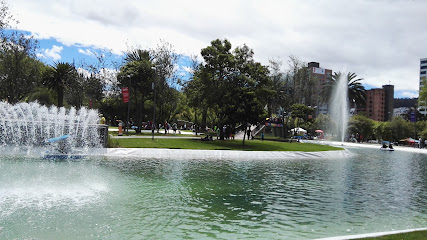
El Mirador De Guapulo
Discover the stunning views of Quito from El Mirador De Guapulo, an essential stop for all travelers seeking panoramic beauty and tranquility.
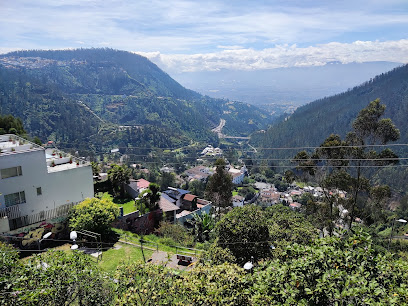
Calle La Ronda
Experience the vibrant culture, history, and culinary delights of Quito on Calle La Ronda, a must-visit destination for every traveler.
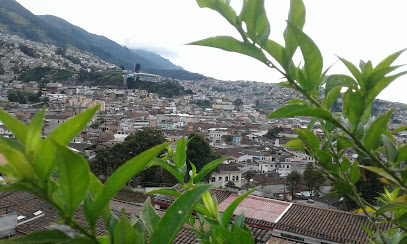
Capilla del Hombre
Discover the powerful legacy of Oswaldo Guayasamín at Capilla del Hombre, an artistic haven in the heart of Quito that celebrates Ecuadorian heritage.
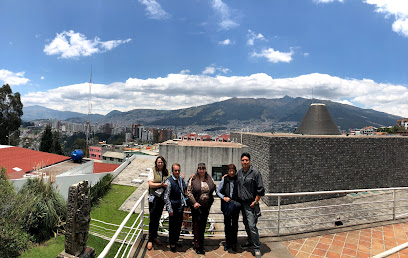
Plaza de La Floresta
Discover the charm and cultural vibrancy of Plaza de La Floresta, a stunning park in Quito, perfect for relaxation and exploration.
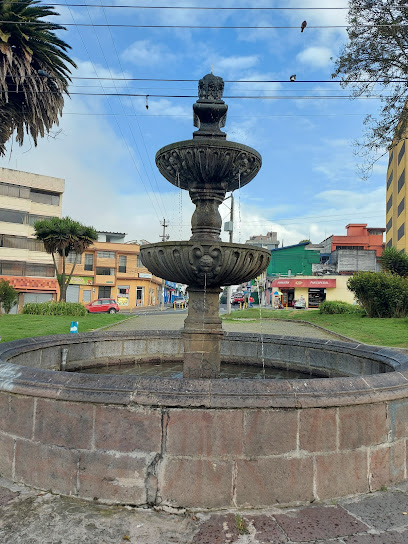
Mercado La Floresta
Explore the vibrant Mercado La Floresta, a culinary and cultural market in Quito filled with fresh produce, local delicacies, and unique crafts.

Monumento a Los Policías
Discover the Monumento a Los Policías in Quito, a historical landmark honoring the bravery of police officers, surrounded by the vibrant La Carolina district.
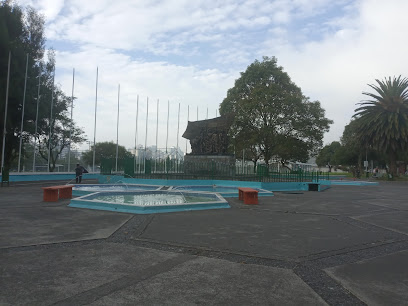
Unmissable attractions to see
Parque El Ejido
Explore the lush landscapes and vibrant culture of Parque El Ejido, a must-visit park in the heart of Quito, Ecuador, perfect for art lovers and nature enthusiasts alike.
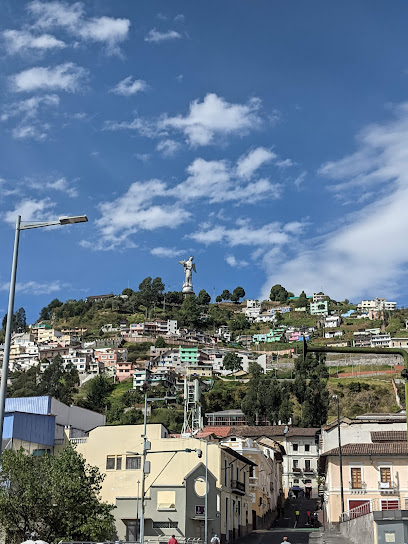
Parque Bicentenario
Discover the beauty and culture of Quito at Parque Bicentenario, a vibrant park offering lush landscapes and enriching experiences for every visitor.

Vulqano Park
Experience the thrill of Vulqano Park in Quito, where adventure meets breathtaking views in a vibrant amusement park setting.
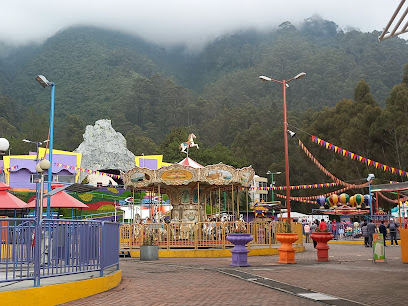
Parque Itchimbía
Discover the enchanting Parque Itchimbía in Quito, a serene park with stunning views, rich greenery, and cultural attractions, perfect for relaxation and exploration.
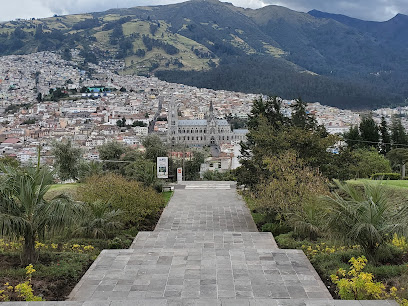
TelefériQo Cable Car
Discover breathtaking views of Quito and the Andes from the TelefériQo Cable Car, an unforgettable mountain adventure.
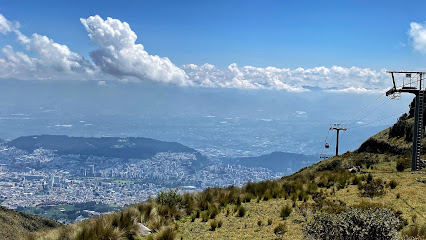
El Mirador De Guapulo
Discover stunning vistas at El Mirador De Guapulo, a captivating observation deck in Quito, Ecuador, blending breathtaking views with rich cultural heritage.
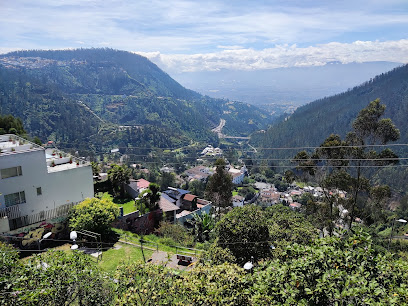
Parque La Alameda
Discover tranquility and culture at Parque La Alameda, a lush park in Quito perfect for relaxation and vibrant Ecuadorian experiences.
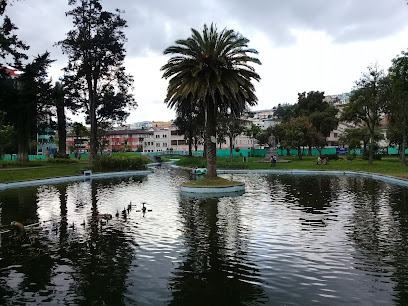
Swing in the clouds - Teleférico
Discover breathtaking heights at the Swing in the Clouds in Quito, where adventure meets stunning panoramic views of the Andes.
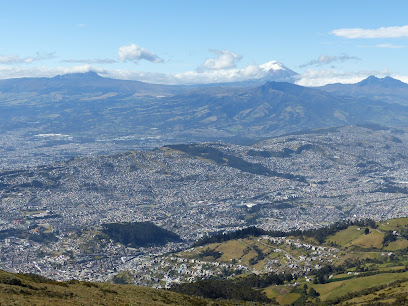
Cima de la Libertad y Templo de la Patria
Explore the Cima de la Libertad y Templo de la Patria in Quito - a tribute to Ecuador's independence and a gateway to breathtaking views.
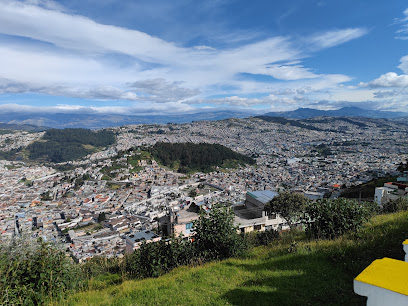
Plaza de La Floresta
Explore the beauty and culture of Quito at Plaza de La Floresta, a serene park perfect for relaxation and local experiences.
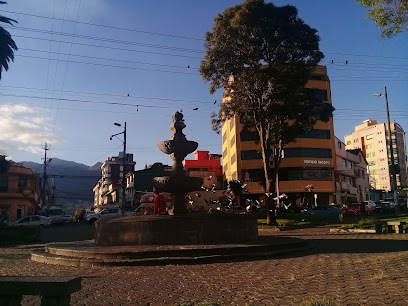
Vivarium
Discover the extraordinary biodiversity of Ecuador at Vivarium, a captivating museum in Quito dedicated to reptiles and amphibians.
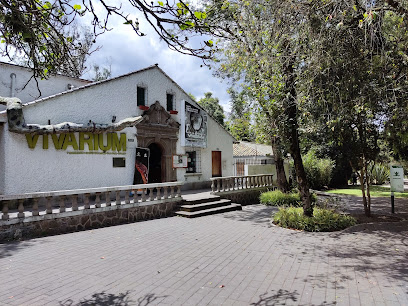
El Churo
Explore El Churo, a vibrant tourist attraction in Quito, Ecuador, where local culture, cuisine, and community come alive in a picturesque setting.
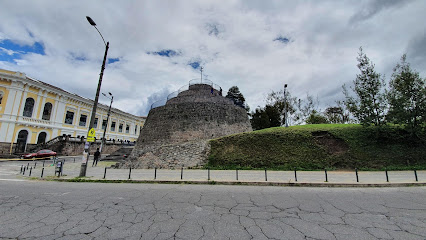
La Guaragua
Explore the enchanting La Guaragua in Quito, a historical site that showcases Ecuador's rich cultural heritage and architectural brilliance.
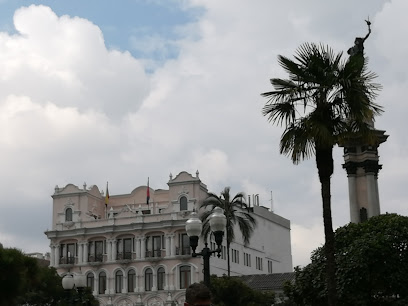
Free Walking Tour Quito
Experience Quito's vibrant history and culture with a Free Walking Tour through the stunning streets of Ecuador's capital city.
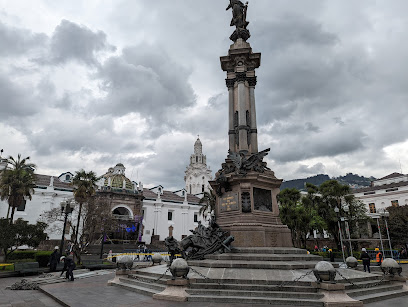
Museo Amazonico
Explore the cultural and ecological marvels of the Amazon at Museo Amazonico, a captivating ethnographic museum in the heart of Quito.
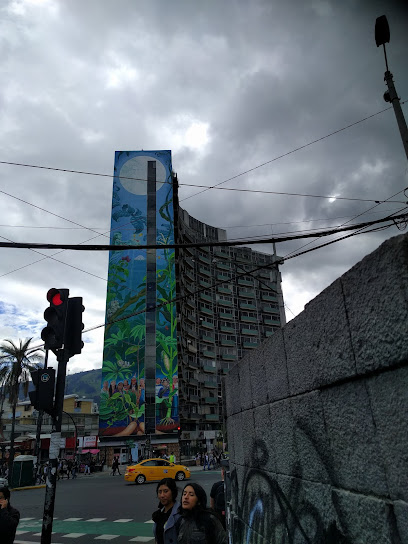
Essential places to dine
La Briciola
Experience authentic Italian cuisine in Quito's vibrant La Floresta neighborhood at La Briciola - where every dish tells a delicious story.
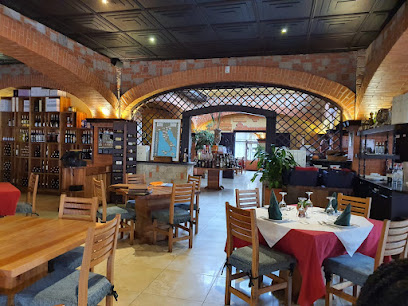
Lucia's House
Indulge in exquisite American cuisine at Lucia's House in Quito – where flavor meets hospitality.
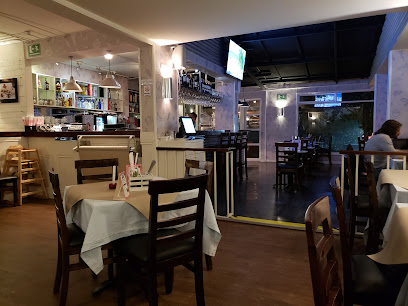
Casa Warmi
Experience authentic Ecuadorian cuisine at Casa Warmi in La Floresta – where every dish tells a story!
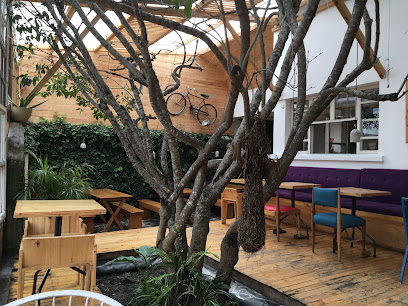
AL Forno Floresta
Discover authentic Italian flavors at AL Forno Floresta in Quito's charming La Floresta neighborhood.
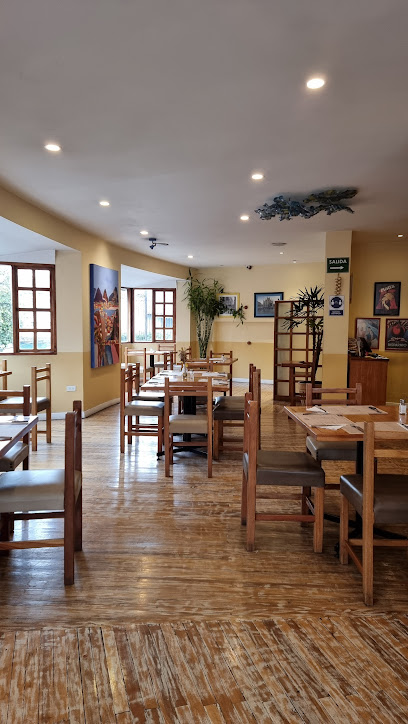
La Gloria Restaurante
Discover exquisite Mediterranean cuisine fused with Peruvian flavors at La Gloria Restaurante in Quito's vibrant La Floresta neighborhood.
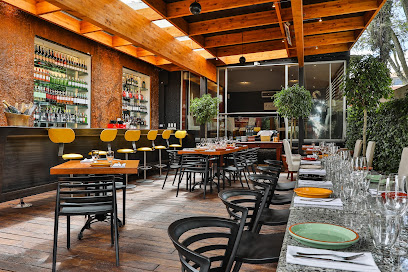
El Pescador
Discover exquisite seafood at El Pescador in Quito, where fresh flavors meet Ecuadorian tradition for an unforgettable dining experience.
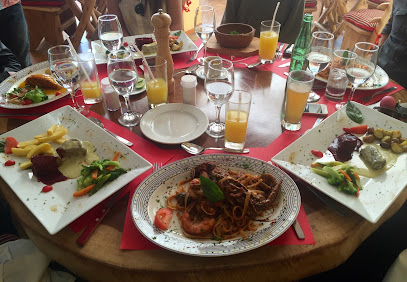
La Ñora
Discover authentic Ecuadorian cuisine at La Ñora in Quito's vibrant La Floresta neighborhood – a must-visit for food enthusiasts!
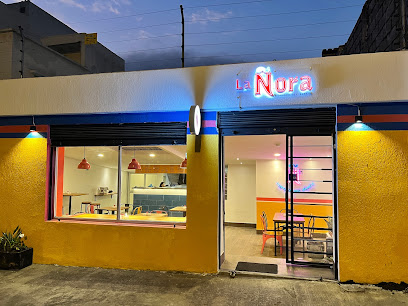
Manabiche La Floresta
Discover the taste of fresh seafood at Manabiche La Floresta in Quito - where health meets flavor in every dish.
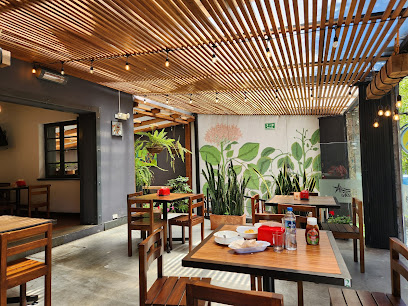
Mucho Gusto
Experience the flavors of Ecuador at Mucho Gusto Bistro in Quito - where every dish tells a story.
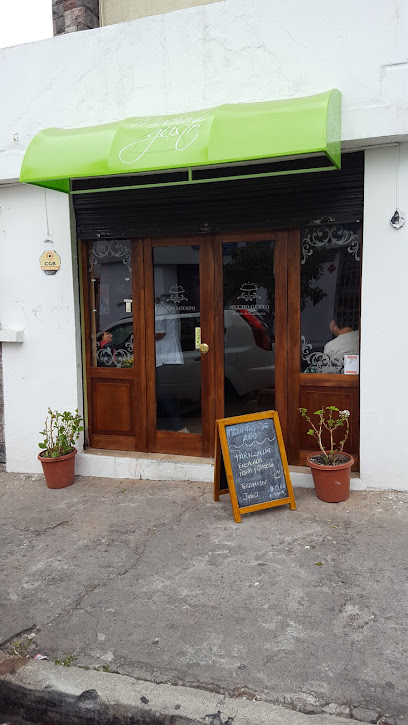
Restaurante Floresta Brava
Experience authentic Ecuadorian cuisine at Restaurante Floresta Brava in Quito's charming La Floresta neighborhood.
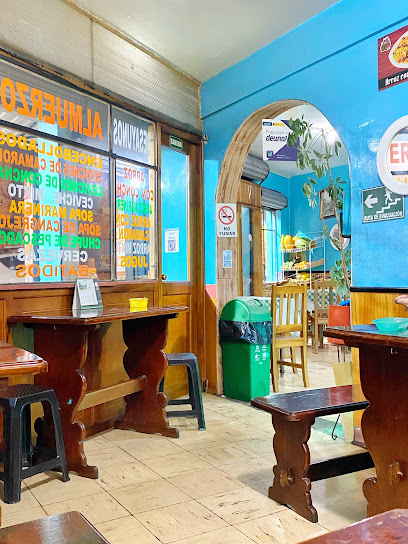
Markets, malls and hidden boutiques
Frado
Explore Frado in Quito for an exquisite selection of jewelry, men's fashion, perfumes, and accessories, blending style with Ecuadorian flair.
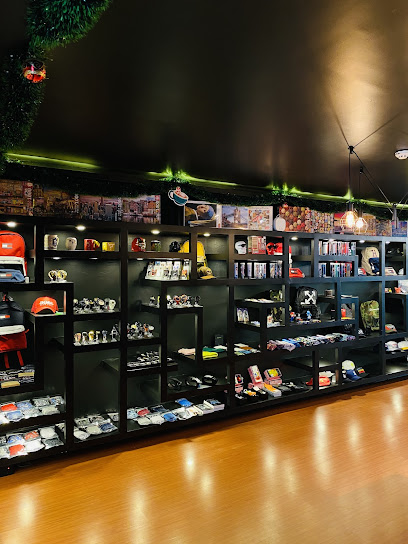
Robot Rock Store Floresta
Explore the vibrant styles of Ecuador at Robot Rock Store Floresta, where unique designs meet local artistry in the heart of Quito.
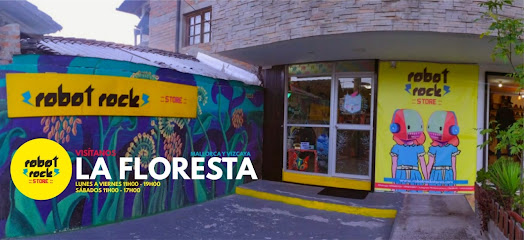
Comercial Floresta
Experience the essence of Ecuador at Comercial Floresta, a dynamic shopping mall filled with local treasures, clothing, and toys in Quito's La Floresta.
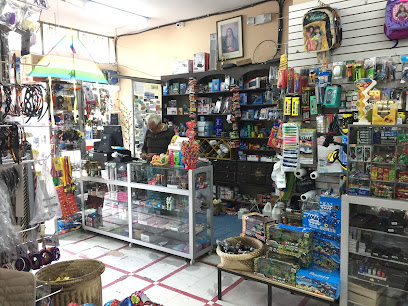
Regalos a Domicilio en Quito
Explore Regalos a Domicilio en Quito for unique Ecuadorian gifts and handcrafted treasures that capture the essence of your travel experience.
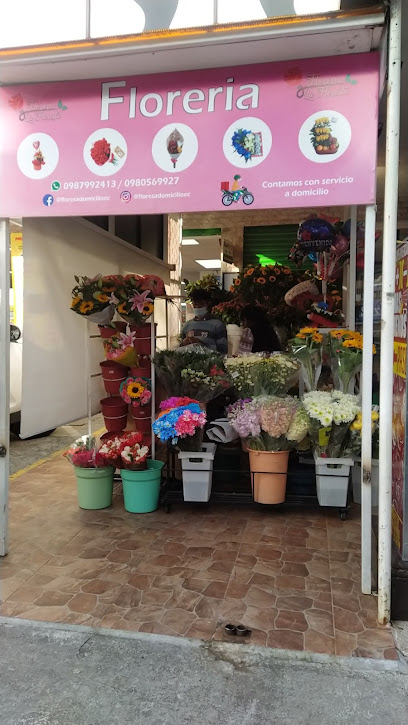
Jagannath's Boutique
Experience the vibrant blend of traditional and modern fashion at Jagannath's Boutique in Quito, a must-visit for unique clothing and accessories.

Basilic OnlineStore
Experience the vibrant flavors of Ecuador at Basilic OnlineStore, a local grocery gem in Quito's La Floresta neighborhood.

Nina Folk
Explore Nina Folk, Quito's charming gift shop for authentic Ecuadorian handicrafts and souvenirs that celebrate local artistry and culture.
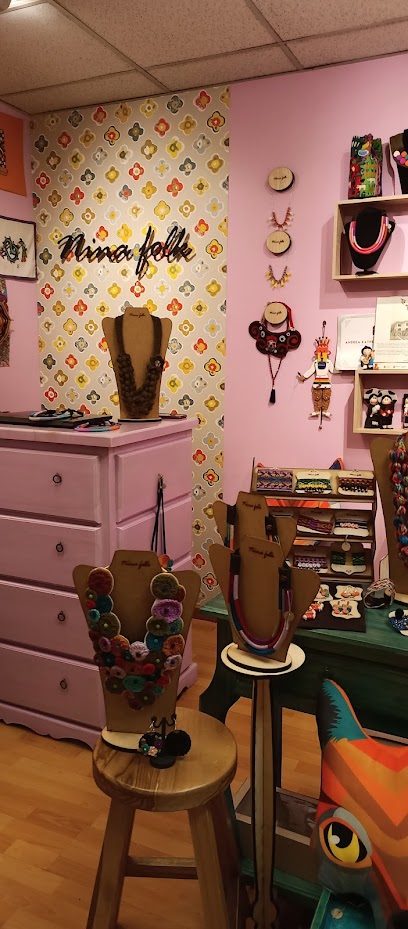
Caprichos y Regalos
Explore the whimsical world of Caprichos y Regalos, a unique novelty store in Quito offering handcrafted treasures and joyful souvenirs.
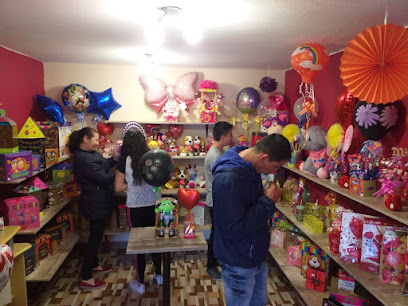
Ropa Americana Mi Tiendita by Ceci
Explore the vibrant fashion scene of Quito at Ropa Americana Mi Tiendita by Ceci, where unique clothing meets local culture.
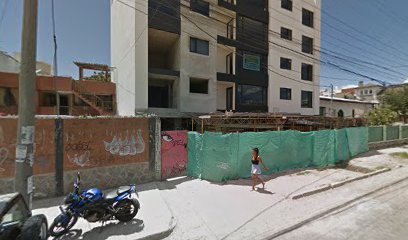
Shop Place
Discover local culture and unique souvenirs at Shop Place, a charming general store in La Floresta, Quito, perfect for tourists and locals alike.
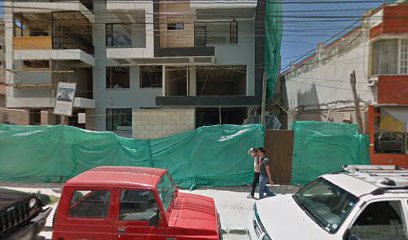
Essential bars & hidden hideouts
Sinners Microbrewery Floresta
Experience the best of Quito's craft beer scene at Sinners Microbrewery Floresta, where every sip tells a story of local flavors.
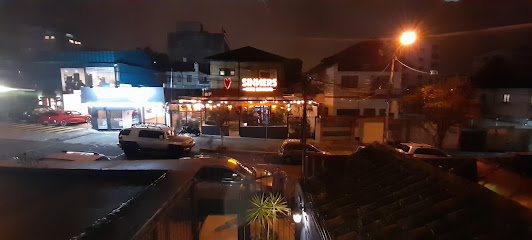
Cervecería SHAMAN - La Floresta
Discover the lively ambiance and craft beer selection at Cervecería SHAMAN - La Floresta in Quito, the perfect spot for food and fun.
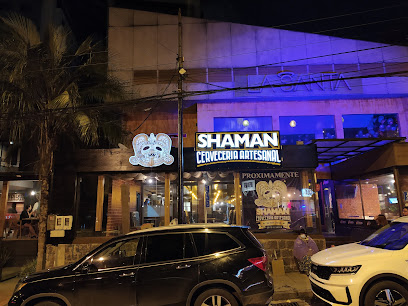
Curuba
Experience the vibrant ambiance of Curuba in La Floresta, Quito – the perfect lounge for unwinding with exquisite cocktails and captivating atmosphere.
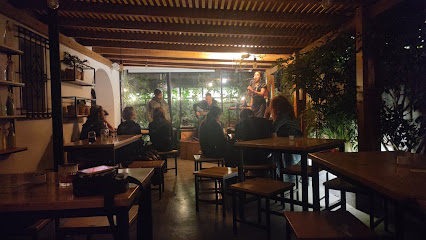
1 y 2 Food and drinks
Experience the vibrant flavors of Ecuador at 1 y 2 Food and Drinks, a premier grill restaurant in Quito's La Mariscal district.
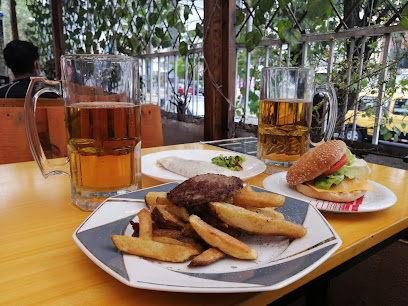
Artifice Floresta
Discover the vibrant flavors of Quito at Artifice Floresta, a gastropub that combines local ingredients with creative culinary flair.
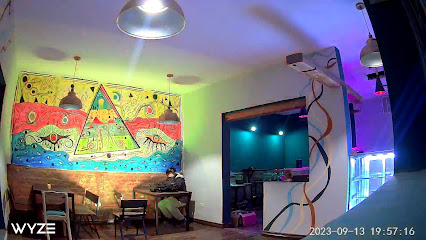
Xqueje
Discover Xqueje in La Floresta, Quito – where delightful grill cuisine meets a unique bar experience in a vibrant atmosphere.
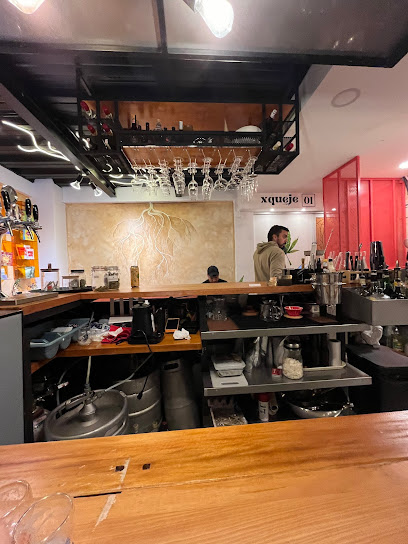
THE LION BAR
Experience the vibrant nightlife at The Lion Bar in Quito, where refreshing drinks and a lively atmosphere await every traveler.
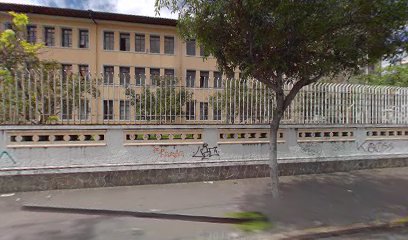
La Cava Retro Bar
Experience the vibrant nightlife of Quito at La Cava Retro Bar, where live piano music and handcrafted cocktails create unforgettable memories.
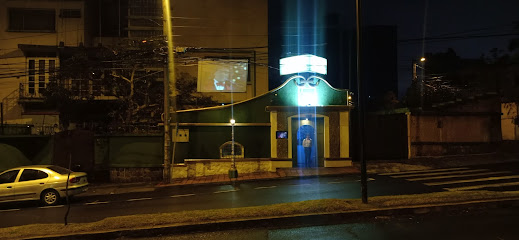
Bibo
Discover Bibo in La Floresta, Quito - where innovative cocktails and a vibrant atmosphere come together for an unforgettable experience.
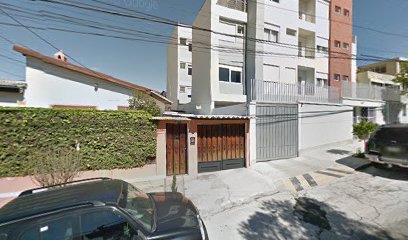
Memories Snacks Lounge
Experience vibrant nightlife at Memories Snacks Lounge in Quito, a karaoke bar where every night is filled with fun, music, and delicious snacks.
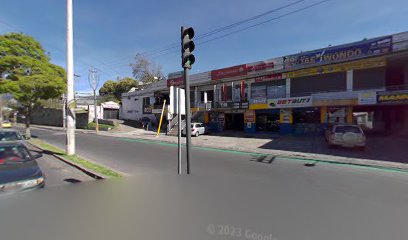
Local Phrases
-
- HelloHola
[oh-lah] - GoodbyeAdiós
[ah-dee-ohs] - YesSí
[see] - NoNo
[no] - Please/You're welcomePor favor/De nada
[por fah-vor/deh nah-dah] - Thank youGracias
[grah-see-ahs] - Excuse me/SorryDisculpe/Lo siento
[dees-kool-peh/loh see-ehn-toh] - How are you?¿Cómo estás?
[koh-moh ehs-tahs] - Fine. And you?Bien. ¿Y tú?
[bee-ehn. ee too] - Do you speak English?¿Hablas inglés?
[ah-blahs een-glehs] - I don't understandNo entiendo
[noh ehn-tee-ehn-doh]
- HelloHola
-
- I'd like to see the menu, pleaseMe gustaría ver el menú, por favor
[meh goos-tah-ree-ah behr ehl meh-noo, por fah-vor] - I don't eat meatNo como carne
[noh koh-moh kahr-neh] - Cheers!¡Salud!
[sah-loohd] - I would like to pay, pleaseMe gustaría pagar, por favor
[meh goos-tah-ree-ah pah-gahr, por fah-vor]
- I'd like to see the menu, pleaseMe gustaría ver el menú, por favor
-
- Help!¡Ayuda!
[ah-yoo-dah] - Go away!¡Vete!
[veh-teh] - Call the Police!¡Llama a la Policía!
[yah-mah ah lah poh-lee-see-ah] - Call a doctor!¡Llama a un doctor!
[yah-mah ah oon dohk-tohr] - I'm lostEstoy perdido
[ehs-toy pehr-dee-doh] - I'm illEstoy enfermo
[ehs-toy ehn-fehr-moh]
- Help!¡Ayuda!
-
- I'd like to buy...Me gustaría comprar...
[meh goos-tah-ree-ah kohm-prahr] - I'm just lookingSolo estoy mirando
[soh-loh ehs-toy mee-rahn-doh] - How much is it?¿Cuánto cuesta?
[kwan-toh kwehs-tah] - That's too expensiveEsto es demasiado caro
[ehs-toh ehs deh-mah-see-ah-doh kah-roh] - Can you lower the price?¿Puede rebajar el precio?
[pweh-deh reh-bah-har ehl preh-see-oh]
- I'd like to buy...Me gustaría comprar...
-
- What time is it?¿Qué hora es?
[keh oh-rah ehs] - It's one o'clockEs la una en punto
[ehs lah oo-nah ehn poon-toh] - Half past (10)Media hora (10)
[meh-dee-ah oh-rah (dheez-eez)] - MorningMañana
[mah-nyah-nah] - AfternoonTarde
[tahr-deh] - EveningNoche
[noh-cheh] - YesterdayAyer
[ah-yehr] - TodayHoy
[oy] - TomorrowMañana
[mah-nyah-nah] - 1Uno
[oo-noh] - 2Dos
[dohs] - 3Tres
[trehs] - 4Cuatro
[kwah-troh] - 5Cinco
[seen-koh] - 6Seis
[sehs] - 7Siete
[see-eh-teh] - 8Ocho
[oh-choh] - 9Nueve
[nweh-veh] - 10Diez
[dyehs]
- What time is it?¿Qué hora es?
-
- Where's a/the...?¿Dónde está...?
[dohn-deh ehs-tah] - What's the address?¿Cuál es la dirección?
[kwal ehs lah dee-rehk-syohn] - Can you show me (on the map)?¿Puedes mostrarme (en el mapa)?
[pweh-dehs mohs-trar-meh (ehn ehl mah-pah)] - When's the next (bus)?¿Cuándo es el próximo (autobús)?
[kwan-doh ehs ehl prohk-see-moh (ow-toh-boos)] - A ticket (to ....)Un boleto (a ...)
[oon boh-leh-toh (ah ...)]
- Where's a/the...?¿Dónde está...?
History of La Floresta
-
La Floresta was officially established in the early 20th century, around the 1930s. It began as a residential area designed for the emerging middle class of Quito, reflecting the city's expanding urban landscape. The neighborhood was characterized by its wide streets and green spaces, which became a hallmark of its design, aiming to provide a modern living environment.
-
By the 1950s, La Floresta began to cultivate a reputation as a cultural and artistic center in Quito. This was largely due to the influx of artists, musicians, and intellectuals who were drawn to its vibrant atmosphere. The neighborhood started hosting art galleries, theaters, and cultural festivals, contributing to Quito's broader artistic scene.
-
In the late 20th century, La Floresta experienced significant urban transformation. The gentrification process began, with older properties being renovated and new businesses emerging. This shift not only changed the demographic composition of the area but also led to an increase in property values, making it one of the most desirable neighborhoods in Quito.
-
La Floresta is known for its eclectic architecture, featuring a blend of modernist styles and traditional Ecuadorian elements. In recent years, there has been a concerted effort to preserve these architectural gems, with local government initiatives aimed at maintaining the neighborhood's unique character while accommodating new developments.
-
The residents of La Floresta have a strong sense of community, which has been exemplified through various social movements advocating for local rights and environmental sustainability. Community-led initiatives often focus on enhancing public spaces, promoting local businesses, and fostering a sense of belonging among the diverse population of the neighborhood.
La Floresta Essentials
-
La Floresta is conveniently located in Quito and can be accessed from various neighborhoods. From the Mariscal district, take a taxi or an Uber, which should take around 10-15 minutes. Alternatively, you can use the Ecovía bus system; board a bus at the Estación de la Mariscal and alight at the La Floresta stop. If coming from the historic center, the same Ecovía route applies, or opt for a taxi for a direct route.
-
La Floresta is a walkable neighborhood with many attractions within easy reach. Public transport includes the Ecovía, which runs along Avenida 6 de Diciembre, and local buses that connect to other parts of the city. For a more leisurely experience, consider renting a bicycle, as there are bike lanes in some areas. Rideshare apps like Uber are also widely used for longer distances.
-
La Floresta is generally considered safe for tourists. However, as in any urban area, exercise caution, especially at night. Avoid walking alone in darker streets and be mindful of your belongings in crowded places. Areas near the Parque La Carolina can be busy, so stay vigilant. It's advisable to avoid the outskirts of the neighborhood late at night, as they can be less populated and less secure.
-
In case of an emergency, dial 911 for police, fire, or medical assistance. The nearest hospital is Hospital Metropolitano, which is well-equipped to handle emergencies. Keep a copy of your travel insurance and identification on hand. For minor health issues, pharmacies are available throughout La Floresta, where you can find over-the-counter medication.
-
Fashion: Do dress comfortably but modestly; while La Floresta is trendy, avoid overly revealing clothing. Religion: Do respect local customs; when visiting churches, dress appropriately. Public Transport: Do be polite; give up your seat to the elderly and women with children. Don't engage in loud conversations or eat on public transport. Greetings: Do greet people with a smile and a handshake. Eating & Drinking: Do try local cafes and eateries; don't refuse food or drink offered to you as it can be seen as impolite.
-
To experience La Floresta like a local, visit the artisan markets that pop up on weekends, where you can find handmade crafts and local food. Explore the vibrant street art that adorns many buildings; take a stroll and enjoy the creativity. Consider visiting the neighborhood's small galleries and cafes, where you can often find live music or art events. Engaging with locals at these venues can provide deeper insights into the culture and community.
-
When interacting with locals, it's customary to greet with a friendly 'Buenos días' in the morning and 'Buenas tardes' in the afternoon. Remember to use formal titles such as 'Señor' or 'Señora'. Additionally, it's polite to accept invitations to share a meal or drink, as hospitality is highly valued in Ecuadorian culture.
-
La Floresta is known for its culinary scene. Do visit local eateries like 'Las Corvinas del Río' for fresh seafood or 'La Casa de la Cultura' for traditional Ecuadorian dishes. Make sure to try a 'ceviche' or 'locro de papa', a local potato soup. Enjoying meals during lunch hours, which typically run from 1 PM to 3 PM, allows you to experience the local dining culture.
Nearby Cities to La Floresta
-
Things To Do in Mindo
-
Things To Do in Otavalo
-
Things To Do in Ibarra
-
Things To Do in Tena
-
Things To Do in Ambato
-
Things To Do in Pasto
-
Things To Do in Macas
-
Things To Do in Manta
-
Things To Do in Guayaquil
-
Things To Do in Cuenca
-
Things To Do in Salinas
-
Things To Do in Popayán
-
Things To Do in Loja
-
Things To Do in Cali
-
Things To Do in Neiva



